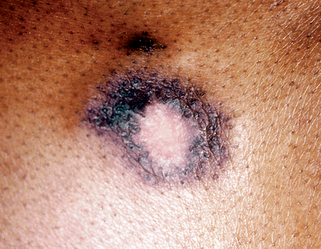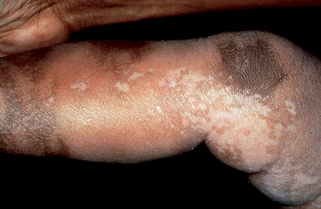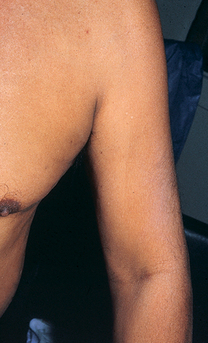Chapter 62 Special considerations in skin of color
Taylor SC, Cook-Bolden F: Defining skin of color, Cutis 69:435–437, 2002.
U.S. Census Bureau: 2008 national population projections: tables and charts. Available at: http://www.census.gov/population/www/projections/tablesandcharts.html. Accessed March 13, 2010.
Jablonski NG, Chaplin G: The evolution of human skin coloration, J Hum Evol 39:57–106, 2000.
Pappert AS, Scher RK, Cohen JL: Longitudinal pigmented nail bands, Dermatol Clin 9:703–716, 1991.

Figure 62-2. Postinflammatory hyperpigmentation in a patient with lupus erythematosus.
(Courtesy of James E. Fitzpatrick, MD.)

Figure 62-3. Postinflammatory hyperpigmentation and hypopigmentation in a child with atopic dermatitis.
(Courtesy of James E. Fitzpatrick, MD.)
Stay updated, free articles. Join our Telegram channel

Full access? Get Clinical Tree









